With picturesque landscapes and countless bays, Hong Kong is a city nestled between the mountains and the sea. Numerous culinary delights and beautiful scenery are yet to be discovered.
In this edition, we visited the charming fishing village of Po Toi O, Sai Kung, where we enjoyed fresh seafood dishes at the Fat Kee Seafood Restaurant. We also visited Duen Kee Chinese Restaurant, located on the slopes of Tai Mo Shan, renowned for its exquisite dim sum dishes and enchanting mountain views.
These two restaurants have both spent decades relying on Nature’s bounty, employing traditional culinary craftsmanship and spirit to create delectable cuisine. Visitors not only savour delicious dishes but also admire Hong Kong’s unique blend of mountain vistas and seascapes, immersing themselves in the city’s distinct cultural and natural heritage. These businesses once again demonstrate the reverence and appreciation of Hong Kong people for nature, and the captivating charm of the city’s cultural diversity.
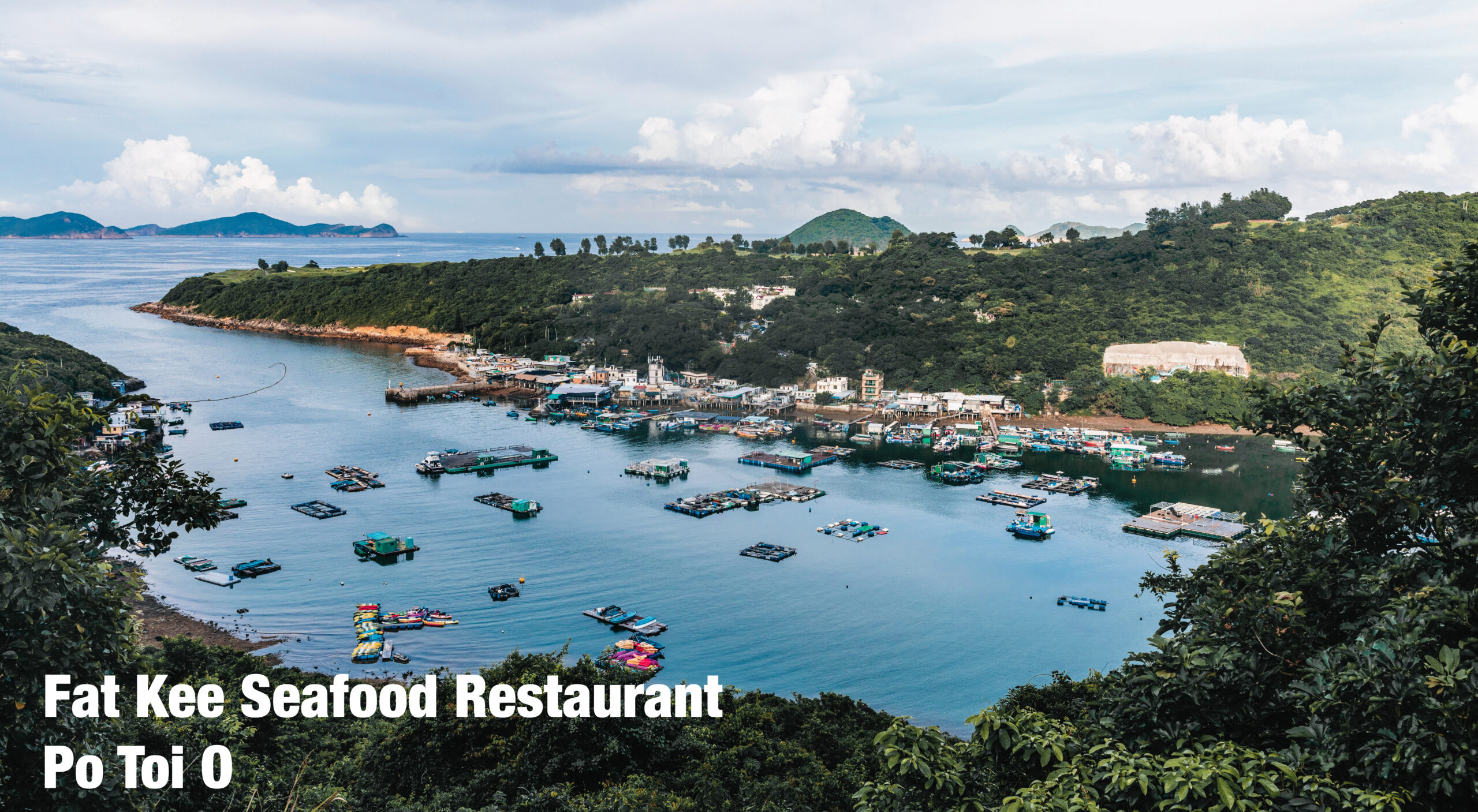
A seafood feast
In mid-August, blue swimming crabs began to appear in the waters near Sai Kung. Po Ka-wing (Po), who runs Fat Kee Seafood Restaurant (Fat Kee) at Po Toi O, took the opportunity during the lunch and dinner periods to go out to sea with his father, to check the fishing nets they had cast along the edge of the island the previous day. While controlling the speed and direction of their fishing boat, they kept an eye out for the floating plastic barrels that are their markers. “We tie plastic barrels to both ends of the fishing nets because the wind can blow the nets away. When we come to collect the nets today, they may not be in the same place we cast them yesterday,” Po explains.
Po just turned 30 this year and is the third generation to run Fat Kee. His family has been fishing along the coast of Po Toi O and running eateries since the time of Po’s grandfather, Po Sui.
Po Toi O is surrounded by mountains on three sides, with a narrow entrance to the sea, resembling a bag: hence its name which means “cloth bag” in Cantonese. The fishing village has a history of over 100 years. About 50 years ago, when Po’s grandfather started building Fat Kee near the pier, there were over 1,000 villagers in the village and several fish farms in the bay, as well as dozens of fishermen’s households living in stilt houses along the coast. Now, the village is home to only a few hundred residents, and Po is the only young person there who knows how to fish.
Explaining why he first started fishing, Po says: “At first, it was simply because of my love of the ocean. But it’s actually tough work — you need to be familiar with the tides, understand fish behaviour, and ultimately your success depends on Nature.”
Deep-sea scorpion fish that required diving to great depths to catch, regular customers who realise their scarcity will call ahead to check their availability before making reservations.
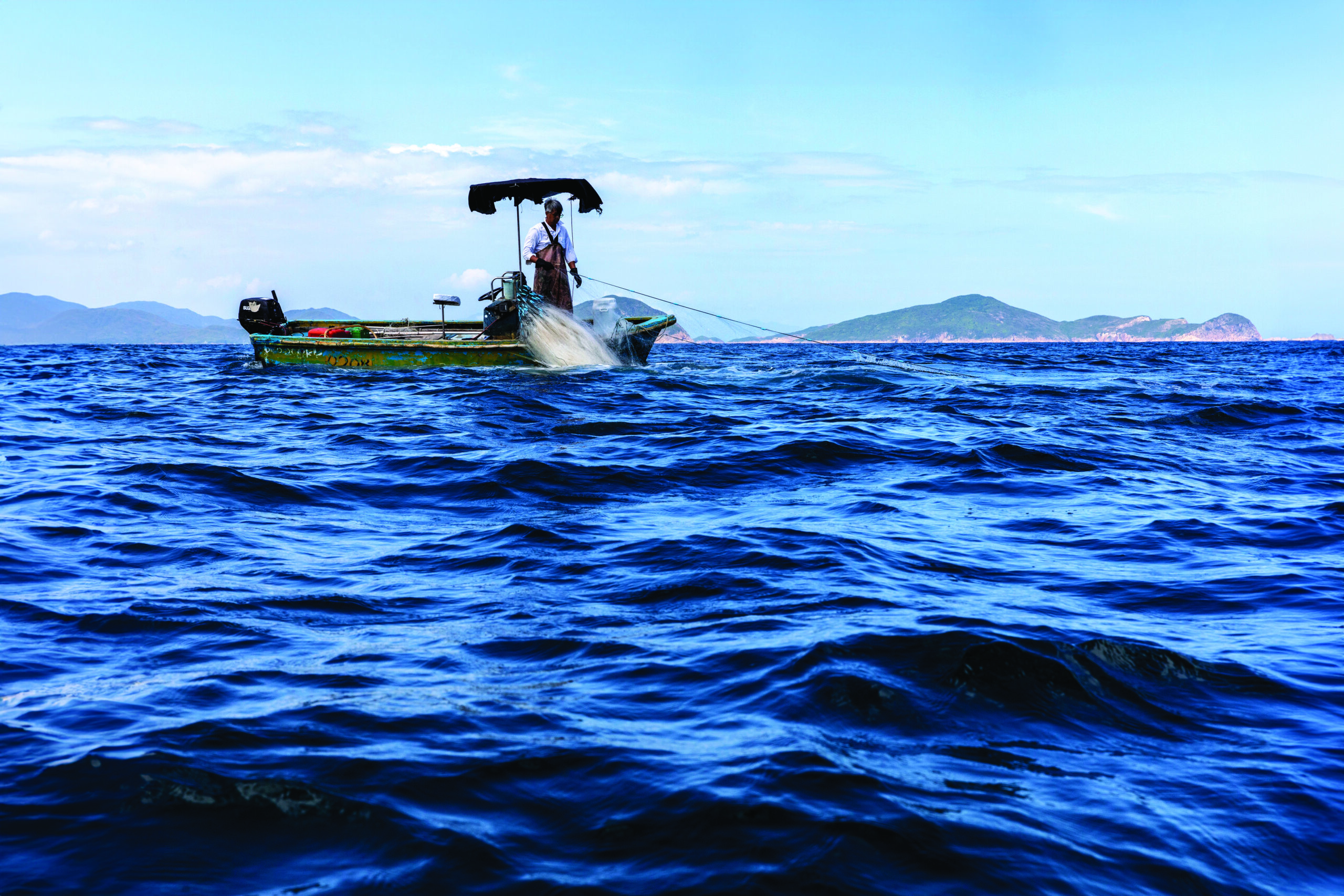
A livelihood dependent on the sea
Blue swimming crabs are a delicacy treasured by gourmets for their tender and delicate meat, which also gives a delicious and sweet aftertaste. Each time Po and his father go out to sea, they deploy ten fishing nets, each 100 metres long. They carefully hide the nets along the paths where the crabs and fish swim, but will not know what the nets have caught until they collect them the next day.
On the day of our visit, the 1 kilometre of nets only caught some ten blue swimmer crabs, along with a small number of yellow croaker, rays and inedible jellyfish. Po sighs with disappointment, admitting the catch is quite small. On lucky days, every section of the nets will be filled with catch as they retrieve the nets from the sea. During the crab mating season, the crabs move sluggishly, which makes it easier to catch them in pairs.
Po says they put their catch in a large fish tank next to the restaurant entrance. When customers arrive, they can select the seafood of their choice, and have it weighed and cooked immediately. Most of the seafood at Fat Kee is air-freighted, but they also catch some themselves in season; and for summer delights like blue swimming crabs, spring treasures such as purple sea urchins, wild fourfinger threadfins and deep-sea scorpion fish that required diving to great depths to catch, regular customers who realise their scarcity will call ahead to check their availability before making reservations. “They’re always freshly caught in the wild, so they are fresher and taste quite different from imported ones,” Po notes.
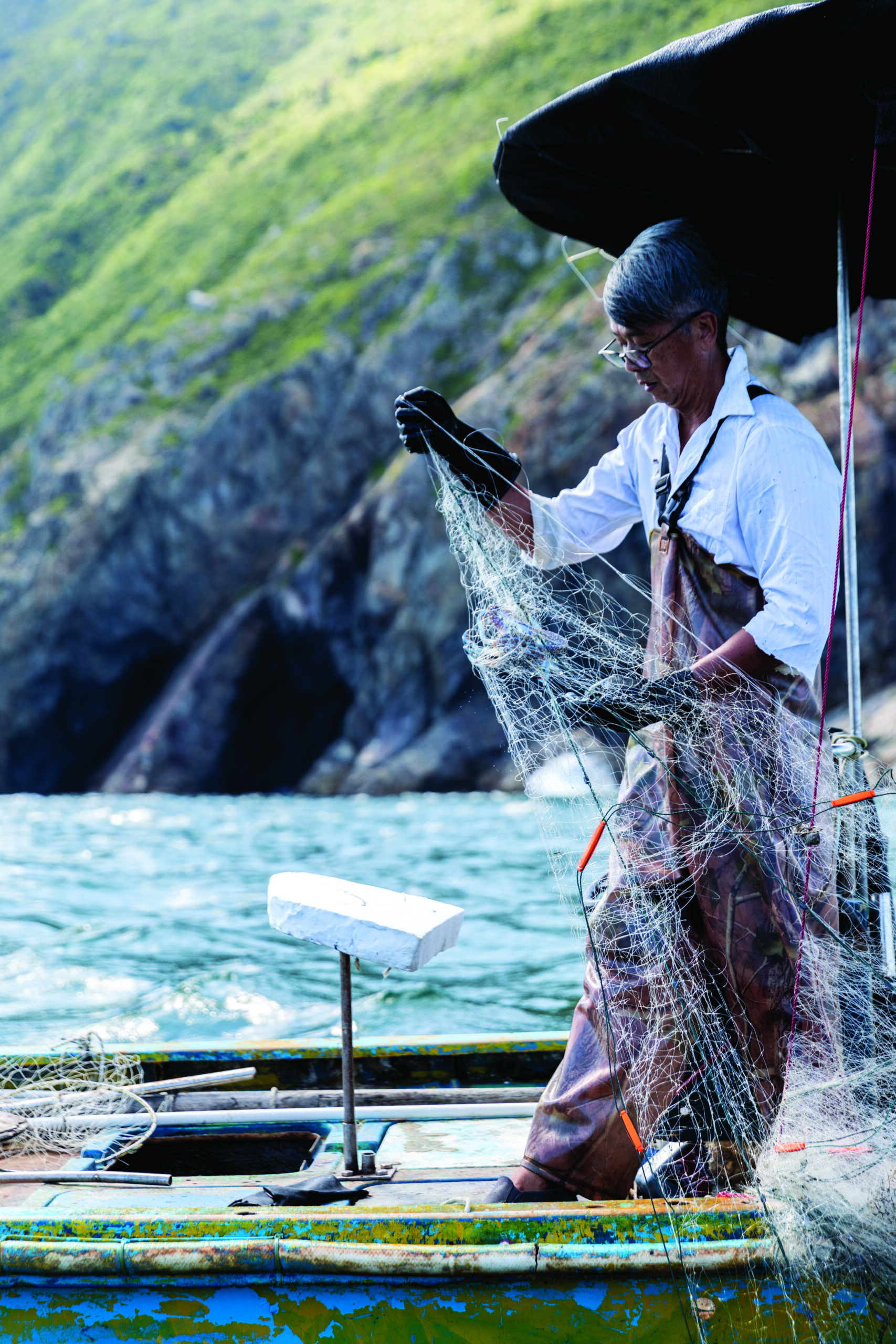
Village flavors
Fat Kee has operated at Po Toi O for over 50 years. Now it is run collectively by Po, his father Po Wai-kit and his four siblings. With years of family tradition and experience behind them, they possess exceptional fishing skills, a discerning eye for selecting seafood, and expert techniques for preparing and cooking it. Their expertise is truly remarkable.
Po’s aunt Po Yan-fan and her husband manage the kitchen. Known for her signature home-cooked dishes, her cooking keeps bringing customers back. Her most famous dish is “Chinese-style Sea Urchin Omelette with Rice”. To cook it, she first pan fries fresh sea urchins until their undersides become crispy, while maintaining a soft and velvety interior. The dish is then garnished with chopped scallion and served with steaming hot plain rice. On the other hand, their much coveted scorpion fish soup is not something you can enjoy all the time. “We dive to catch the fish by ourselves. My husband boils them first and then simmers them for several hours, putting great care and skill into the cooking process,” she shares. Equally famous is Fat Kee’s “Caramelised Squids”, which is made from freshly caught squid. It offers a delightful blend of chewiness, sweetness, and saltiness, with a hint of smoky caramelisation. When asked about the secret ingredients of her dish, Po Yan-fan playfully winks and says, “Only those of us who are Tanka people (one of the major fisherman groups in Hong Kong) know how to make it. I’m afraid it’s a secret recipe that I cannot share with you!”
At Fat Kee, since the fresh seafood is prepared and cooked on the spot — even during weekday lunch hours — you will see a crowd of food enthusiasts coming to enjoy the stunning seaside views while savouring the fresh seafood. Visitors travel to Fat Kee from as far as Mainland China, South Korea, Japan, Europe and Taiwan just to taste the food while also enjoying the sea breeze from the open-air seats. Nearly every table orders the restaurant’s renowned cuttlefish sashimi: the cuttlefish is thinly sliced and served on a bed of ice, offering a delightful and refreshing taste. Other popular dishes include “Stir-fried Razor Clams with Black Bean Sauce” and “Chicken Feet with Sand Ginger Powder”.
Po Yan-fan proudly shares that their restaurant attracts many regular customers, and even celebrities and political figures visit occasionally. The restaurant’s walls are adorned with numerous photos of famous personalities alongside the Po family. With their warm hospitality, the family has also made friends with many of their customers. “We are here not solely for business; the most important thing is to offer our guests a happy meal. We may even prepare a pot of scorpion fish soup for you at cost, as a gift,” she says.
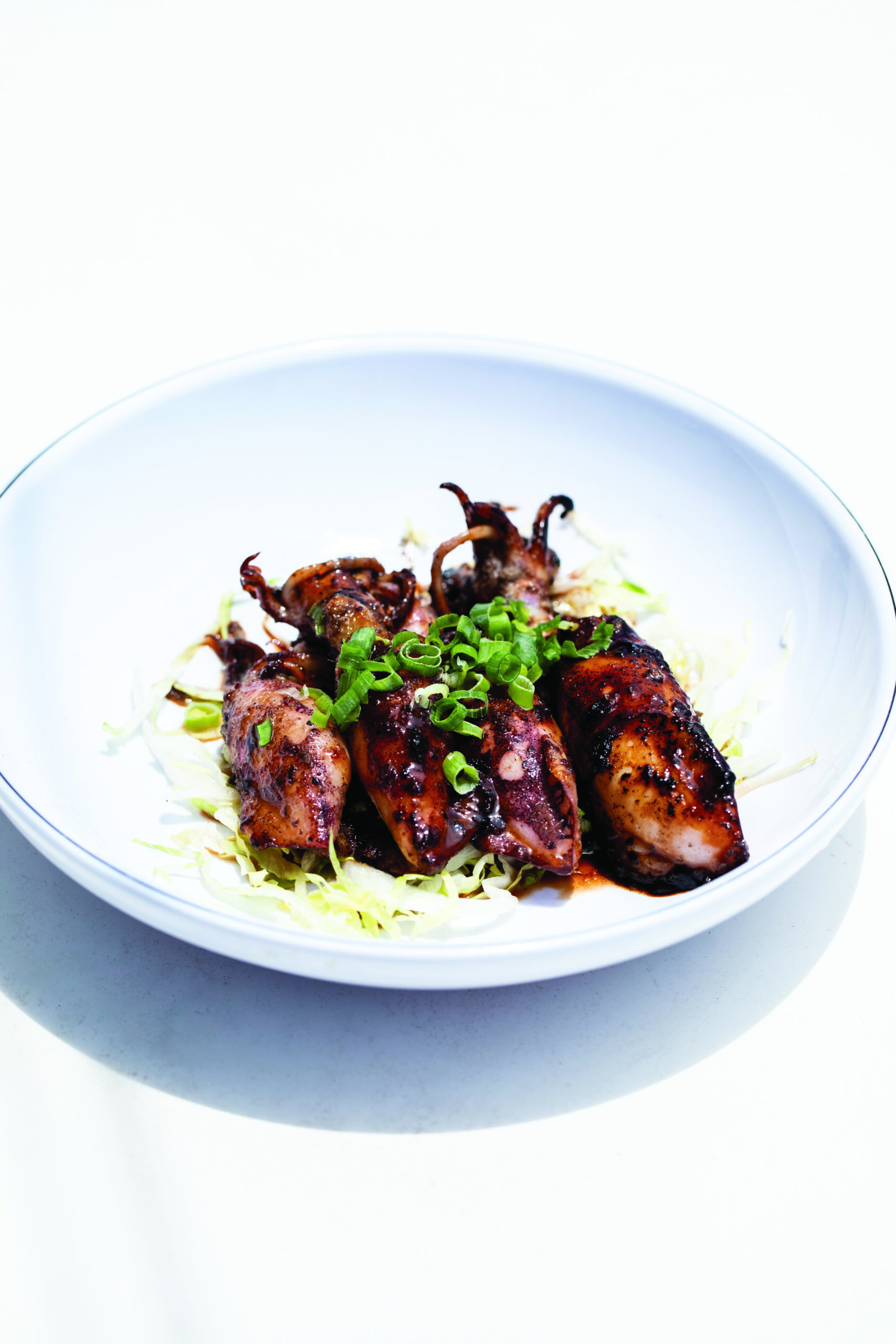
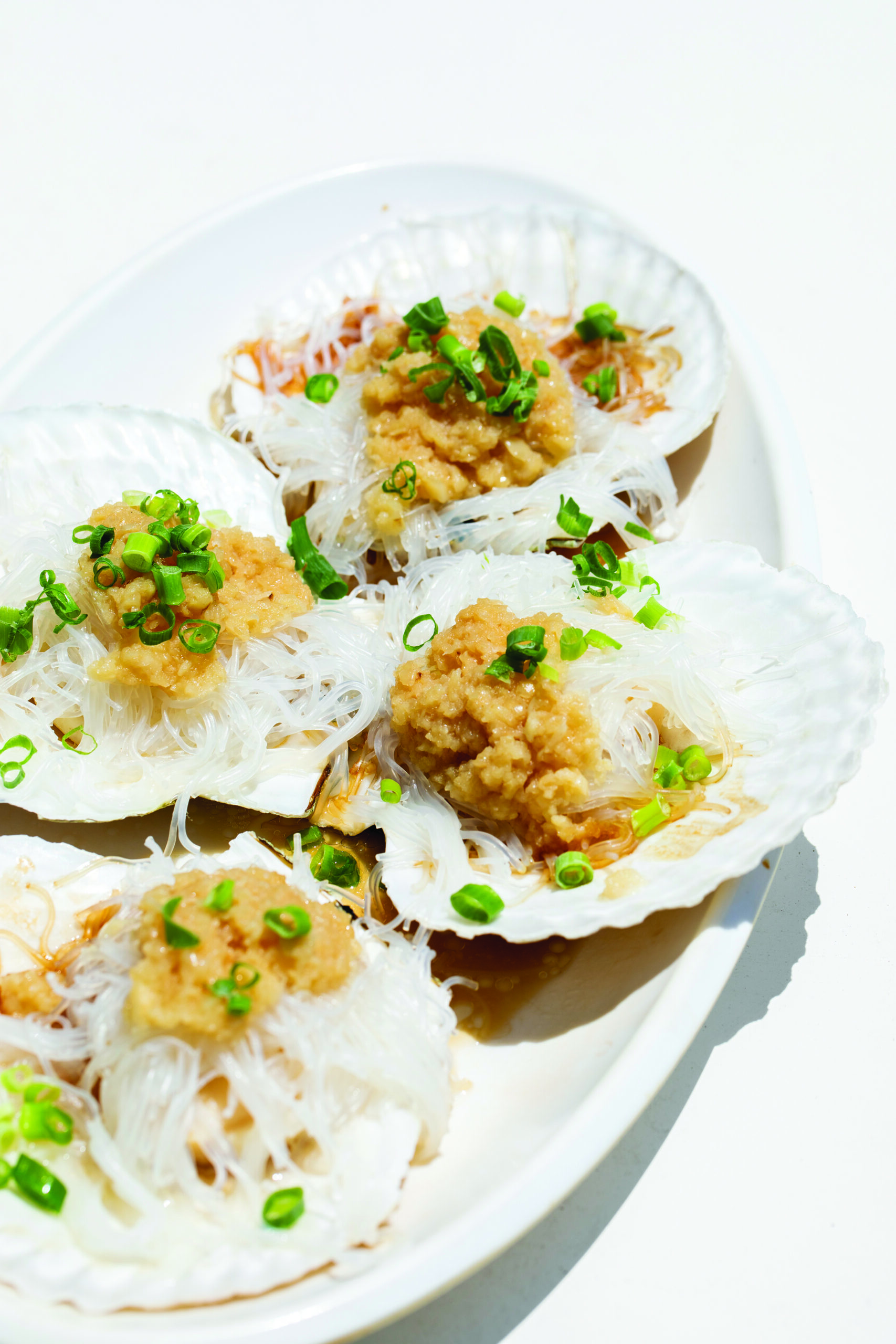
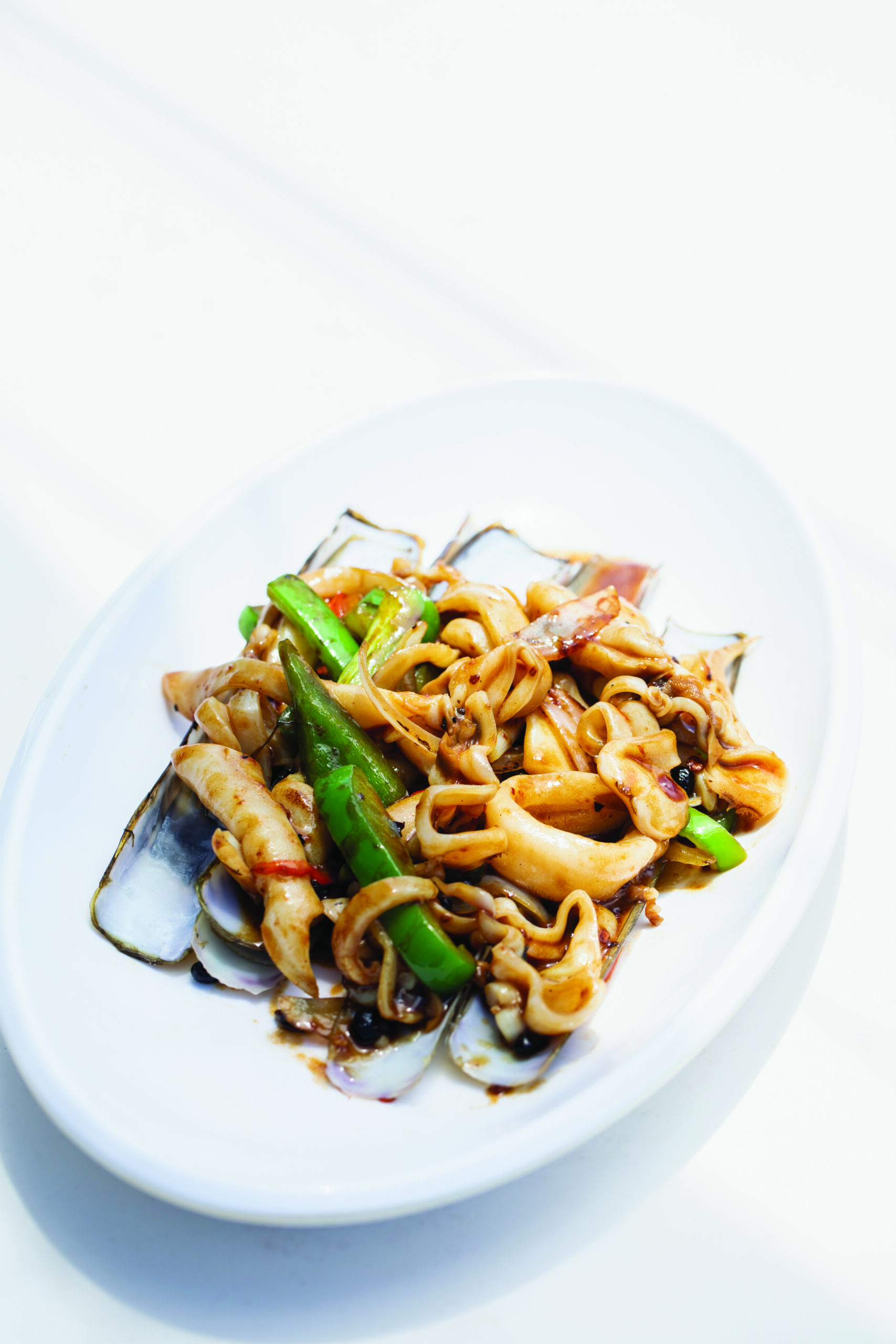
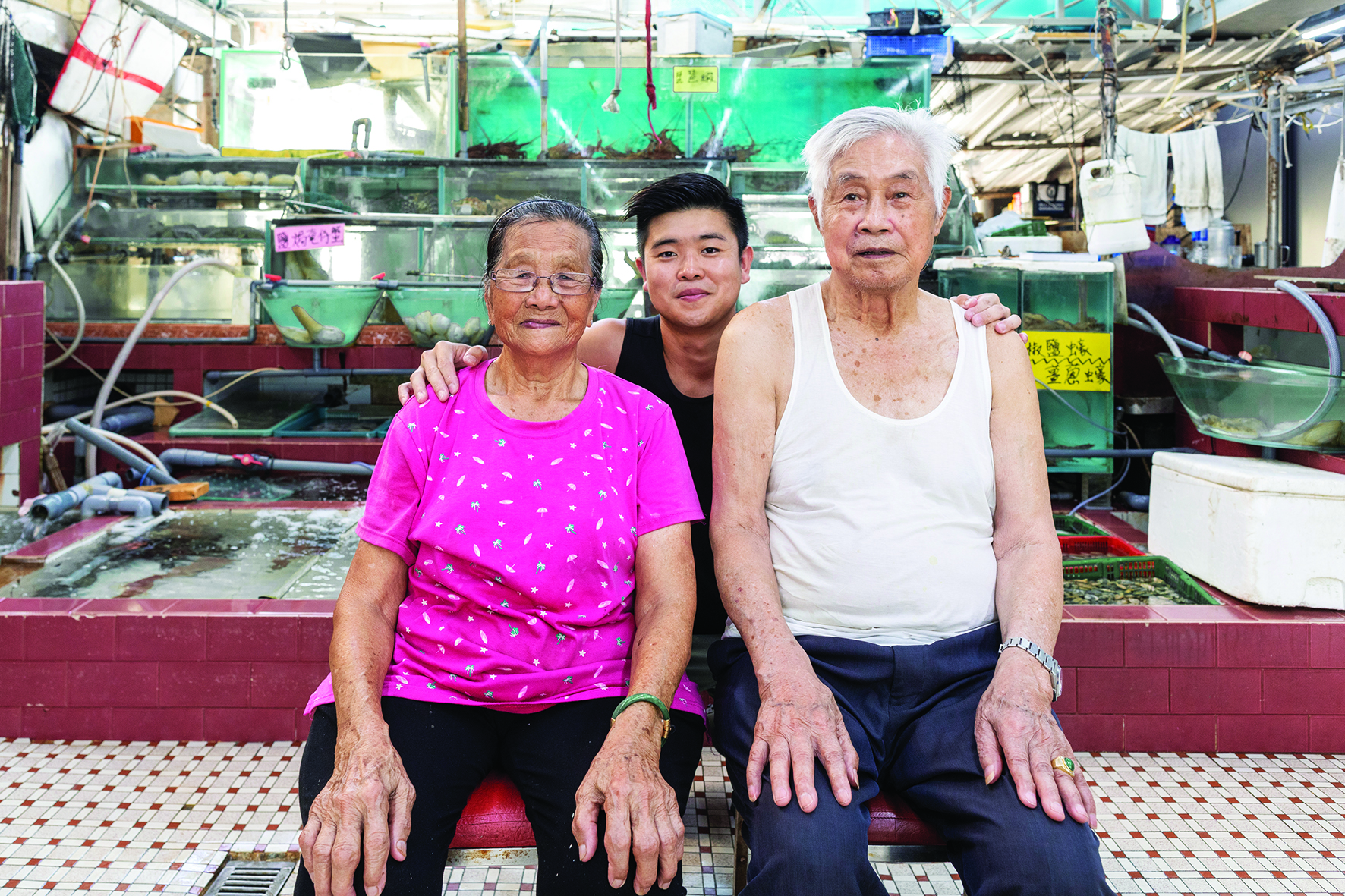
Po Ka-wing, the third generation owner of Fat Kee Seafood Restaurant (middle) with his grandfather, Po Sui (right) and grandmother, Leung Sai-mui
Four generations under one roof
Po has gradually taken over more of the family business, taking on the toil his grandfather and father previously experienced. He learns about fishing from his father, such as how to read the weather: “The wind always comes before the rain, so if strong winds hit suddenly on a sunny day, no matter what stage we are at in setting or retrieving the nets, we have to leave immediately and find shelter by the large rocks or any protected area on the shore.” Po says driving boats and fishing are physically demanding, and the weather can be unpredictable, so it’s safer to go out to the sea with company. “As a kid I worried for my dad going out alone, so I installed GPS on his phone to at least track his location.”
Having lived for so long by the sea, the Tanka people have inherited various superstitions and beliefs. For example, to avoid bad luck, they never salvage a broken anchor found under the sea, regardless of how clean it may be. Villagers in Po Toi O also participate in an annual tradition of honouring the Birthday of Tin Hau (the Goddess of the Sea in the Chinese community). They pilgrimage to the numerous temples around the village dedicated to the Goddess, praying for favourable weather and safe journeys at sea.
The world is changing rapidly, and Po laments that some fishing techniques have already been lost over time. “My grandfather was very talented; he learned to make seine nets (a type of encircling net that hangs vertically in the water with its bottom edge held down by weights and its top edge buoyed by floats), and wooden boats; and cast nets, catch fish and cook them all by himself. My father’s generation still used large wooden boats where seven or eight family members would go fishing together. My generation has never seen wooden fishing boats.”
In recent years, Po has also witnessed the impact of climate change on the fish habitat, resulting in declining catches. As the family’s eldest grandson, he has been racking his brain to find ways to attract more customers to the restaurant. One idea he has is to provide higher-margin drinks such as fresh coconut water and other beverages apart from the traditional soda and beer. “The business has passed onto my generation, and I can’t just give this up,” Po insists.
This year Po’s grandfather, Po Sui, turns 92. The Po family and friends organised a feast to celebrate his birthday at the very restaurant he himself established. Po Sui recounts: “I have four brothers, and when you add up all of their children, there are more than twenty. Each of them has also had children of their own, so now our family has over 110 members.”
He proudly points at a family portrait on the wall, comprising 5 children, 13 grandchildren and a few great-grandchildren — the four generations who are now under one roof at Fat Kee.
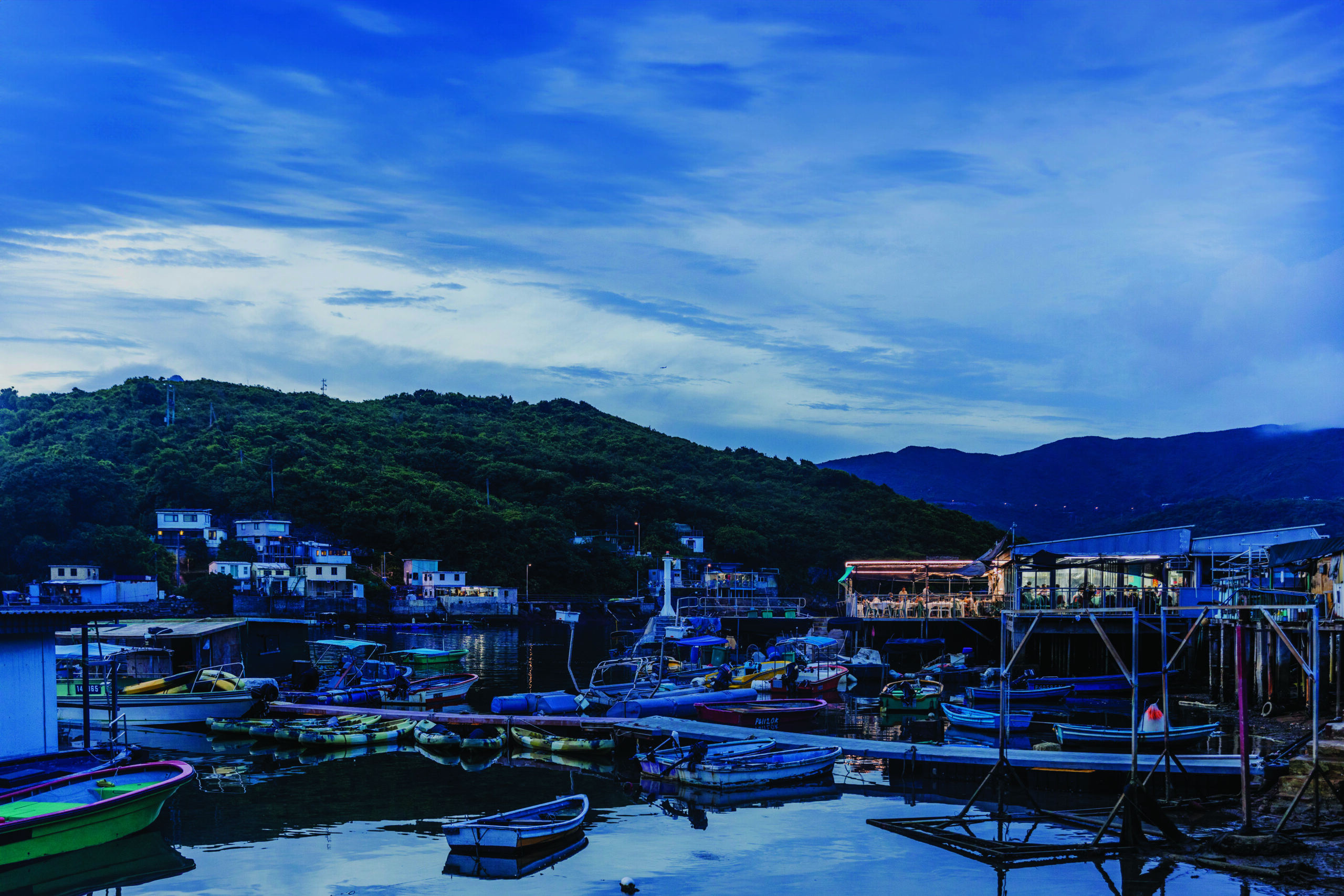
Having lived for so long by the sea, the Tanka people have inherited various superstitions and beliefs. For example, to avoid bad luck, they never salvage a broken anchor found under the sea, regardless of how clean it may be.
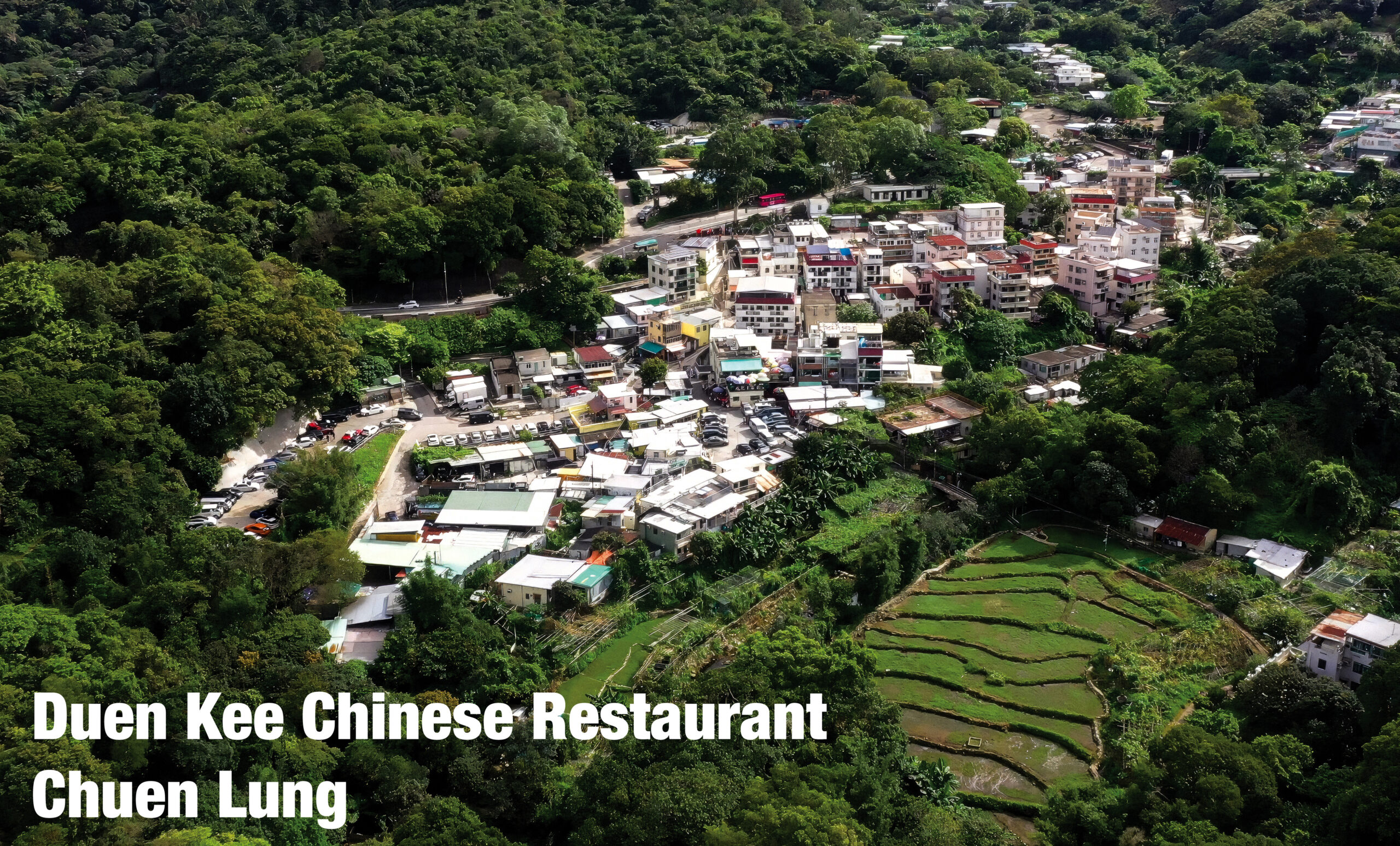
Tea aroma from Duen Kee
On the slopes of Tai Mo Shan in Tsuen Wan lies the village of Chuen Lung, home to a Chinese restaurant nestled between low village houses. For years, Duen Kee Chinese Restaurant (Duen Kee) has attracted customers from far and wide with its traditional handcrafted dim sum, and stunning views.
Wandering through the meandering village roads, one steps back decades on entering Duen Kee — spotless white porcelain teapots and a variety of teas: Jasmine, Shui Xian, Shoumei and Pu’er neatly line the shelves. Upon arrival, guests carefully select their desired tea leaves and deftly brew their own tea. Here at Duen Kee, the rituals of serving tea, washing utensils, and selecting dim sum are all self-service. When a fresh batch of dim sum is ready, staff promptly announce it through the broadcast system which reaches every corner of the restaurant. “Hot dim sum from the kitchen — this round we have Ha-gau (steamed fresh prawn dumplings), Siu-mai (steamed stuffed dumplings with shrimp) and Cha Kwo (steamed sticky rice dumplings). Come grab them while they’re hot!”. Customers will then quickly leave their seats, make their way to the dim sum counter and make their selection.
Owner Tsang Kwan-fai (Fai) is a native of Chuen Lung Village. Now in his fifties, he wears his hair short and has a straightforward way of speaking. Fai says Duen Kee was founded by his father Tsang Chiu-tuen. The restaurant has traded for over 50 years, originally just serving locals tea and pastries for breakfast. Later, it added takeaway meal boxes and sticky rice wrapped in lotus leaf for nearby workers, as the nearby Tai Mo Shan area gradually developed with new bridges, roads, and houses. Later still, dim sum was introduced for passing travellers or Tai Mo Shan visitors seeking a place to rest and fill their bellies.
Here at Duen Kee, the rituals of serving tea, washing utensils, and selecting dim sum are all self-service. When a fresh batch of dim sum is ready, staff promptly announce it through the broadcast system.
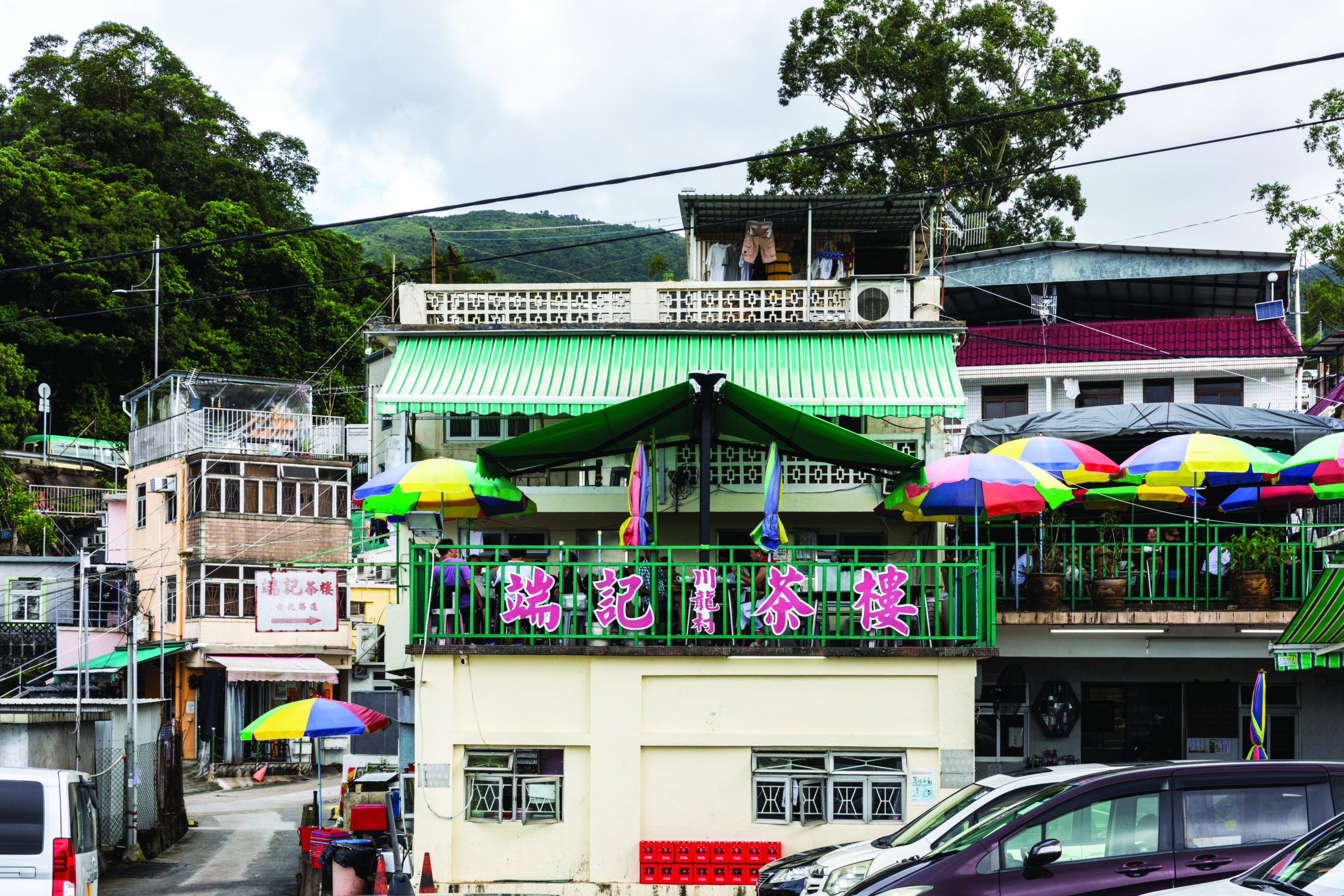
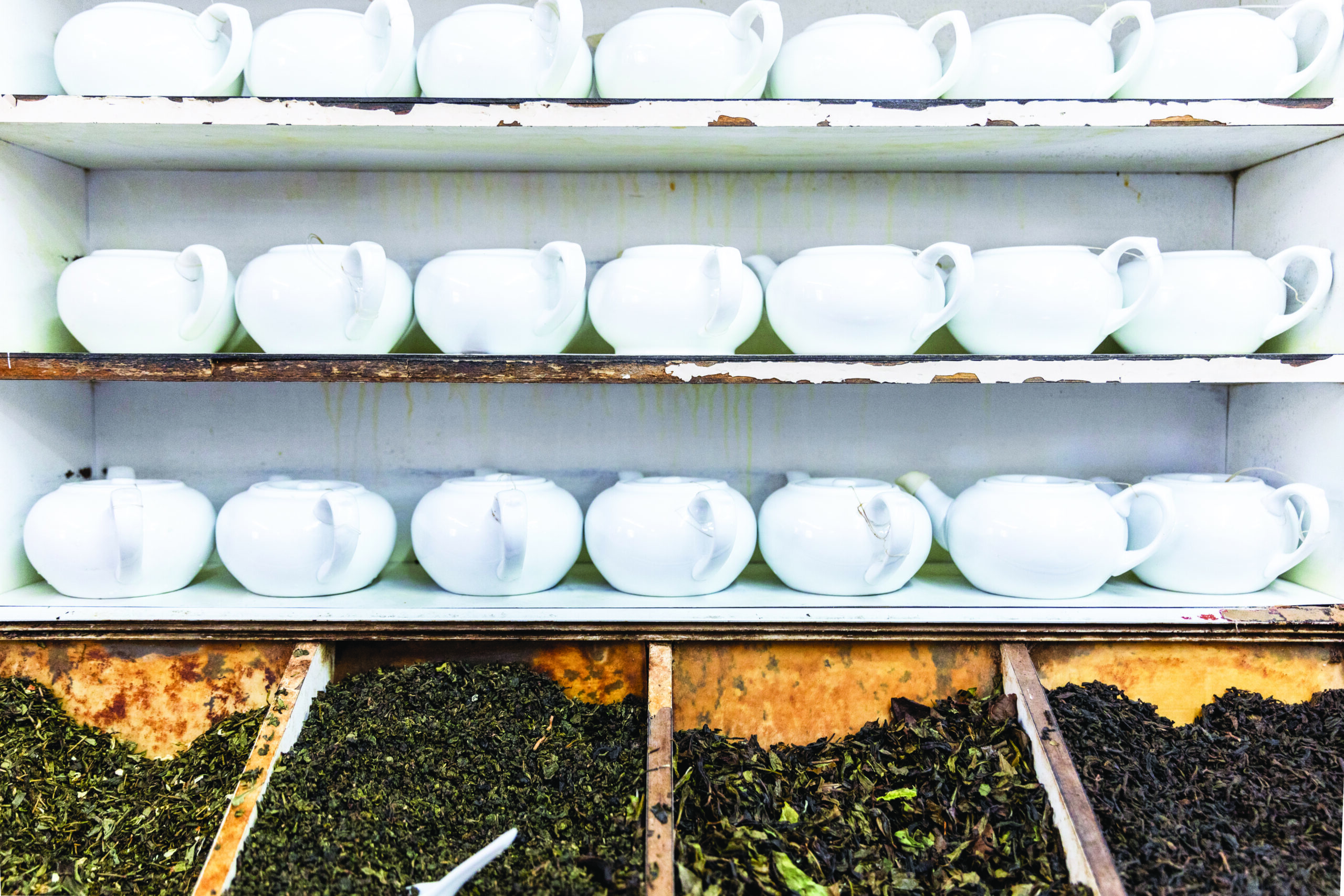
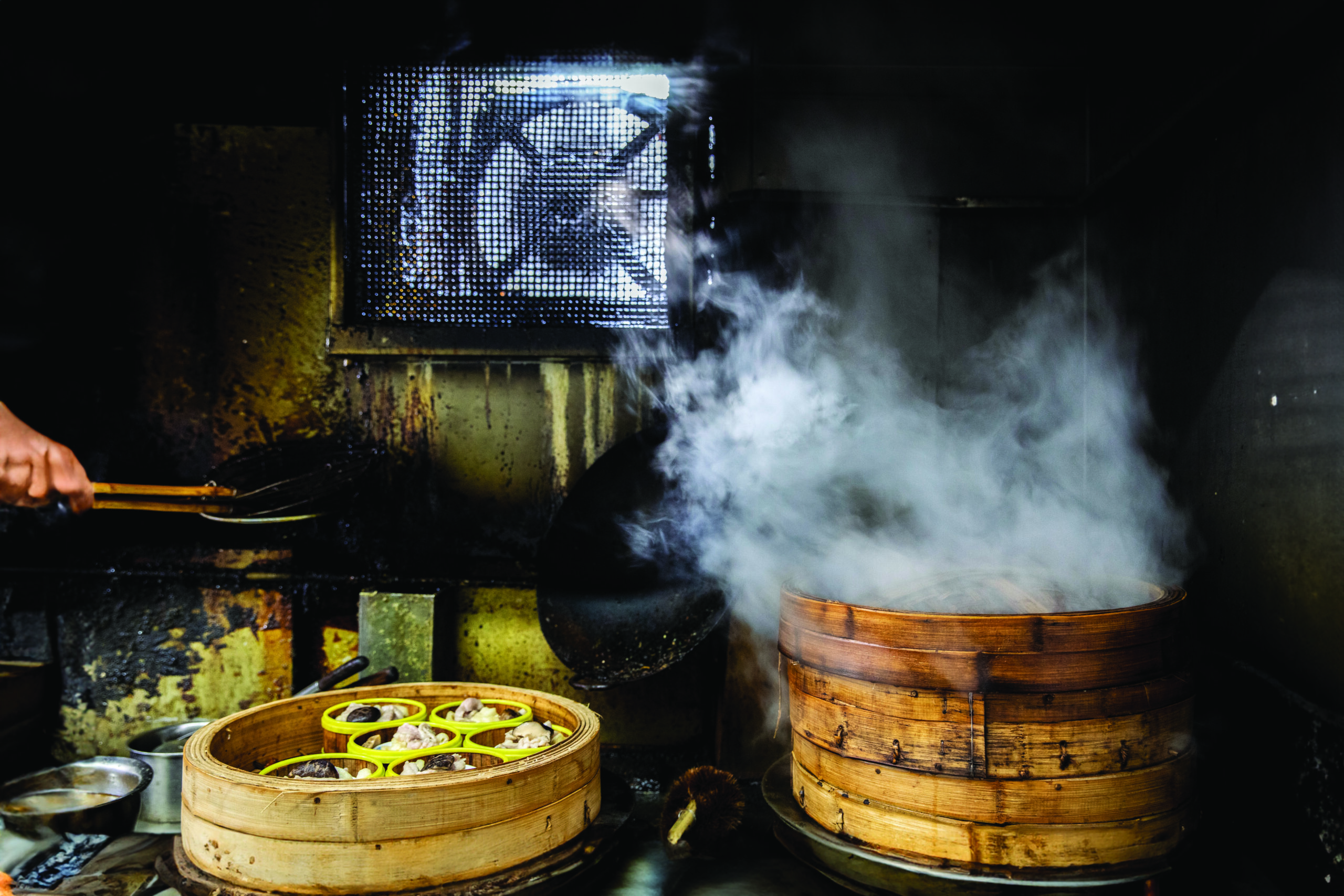
Upholding handcrafted traditions
Fai admits he was not fond of studying so, at a young age, started learning to make dim sum by watching chefs in the kitchens. For example, he learned how to make the perfect steamed rice-flour roll with a thin and chewy skin. Then, around 20 years ago, his elderly father formally handed over Duen Kee to him. Despite the changing world, Fai has steadfastly upheld his father’s handcrafted dim sum traditions.
Over the past few decades, with advancements in technology, even the production of dim sum can now be handled by machines. “Nowadays, with just a phone call, you can have hundred Ha-gaus or steamed barbecued pork buns delivered anytime. You can completely avoid the cost of hiring a master chef, saving several tens of thousands of dollars a month.” Fai remembers what his father told him — that customers can instantly tell the difference between handmade and factory-made dim sum. “He taught me never to serve factory-made dim sum, as the result would be disastrous. If we really couldn’t manage, he would advise bringing in a couple of extra hands to help. That’s how we have remained dedicated to our handcrafted approach until this day.”
Duen Kee is a two-storey establishment, with the kitchen located near the entrance on the ground floor. Staff members bustle around, carrying dim sum bamboo steamers and ingredients in and out of the kitchen. The restaurant opens at five or six in the morning and closes at two in the afternoon. However, the kitchen staff start their day as early as three or four in the morning, to prepare ingredients and make dim sum from scratch. Besides classic dim sum like Ha-gau and Siu-mai, other traditional dishes such as pig large intestines with fermented red beancurd, steamed Chinese sausage rolls, and steamed pork dumplings with quail egg all prove popular. Recently Fai’s wife introduced her sweet and savory Cha Kwo, which flew off the shelves from the moment they were introduced.
“I often say: if you want to eat pigeon, go to Sha Tin; if you want roasted goose, head to Sham Tseng; if you want seafood, go to Sai Kung. But what about dining in Tai Mo Shan? We need to have something unique, and that’s our handmade dim sum.”
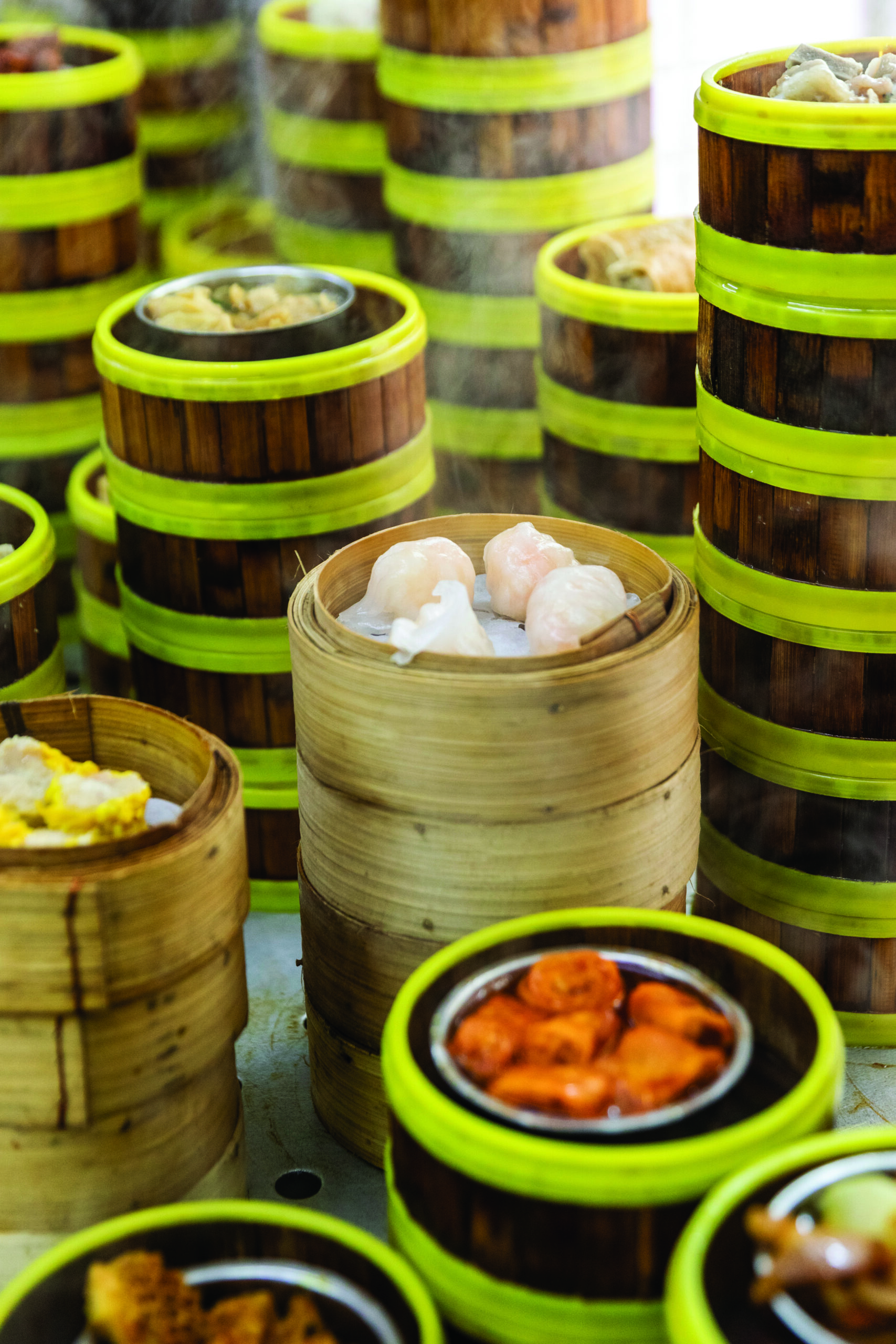
Brewing tea with mountain water
Due to Duen Kee’s long-standing reputation, many people visit Tai Mo Shan expressly to yum cha (literally means to drink tea, but often also interpreted as going for dim sum) and explore Chuen Lung Village.
Chuen Lung is an ancient Hakka village perching on the side of Tai Mo Shan, the highest peak in Hong Kong. Spoken legend tells of ancestors settling here from Guangdong Longchuan County, during the rule of the Ming Dynasty’s Yongle Emperor, and naming their new home Chuen Lung. Due to its mountainous position, the village is surrounded by natural streams and watercourses, where residents used to grow tea and engage in farming for their livelihoods. After the 1920s, tea plantations built higher on the mountain become abandoned, but some villagers still grow watercress nearby. Duen Kee continues the tradition of brewing tea using local mountain spring water, and serving customers from afar with watercress, which is freshly harvested from the local fields during winter.
Fai explains that tea brewed with mountain water is incredibly smooth and flavourful; so much so that a customer once mistakenly assumed that Duen Kee used premium tea leaves, and even asked if he could purchase some from them. Says Fai: “I told him we actually use regular tea leaves, but the key lies in the mountain water from Tai Mo Shan that we use to brew the tea.”
Fai recalls how, in the 1980s and 1990s, before Hong Kong had 24-hour restaurants, Duen Kee — being one of the few establishments that opened its doors early in the morning — became a popular meeting place for young people who frequently nightclubbing and enjoyed nightlife. “They knew Chuen Lung Village was famous for yum cha in the early morning, so they would often bring their dates or friends over for tea as early as four o’clock.”
It was also during this bustling era of Hong Kong, when a 20-something Fai got married and raised four children, while running this restaurant business. In 2003, when Fai’s youngest son was born during Hong Kong’s SARS epidemic, the city’s retail and food sectors suffered a severe blow. But, unexpectedly, the crisis provided an opportunity for Duen Kee to grow, and this became the restaurant’s most prosperous period. Fai explains that, with the government encouraging outdoor pursuits such as hiking, “all eateries in Hong Kong suffered in 2003, except those like us which were located in remote areas.”
Customers flooded in, and the work became overwhelming. To maintain the quality of the dim sum, Fai recruited dim sum masters as extra helpers on a daily basis. “On busy days, we would hire more helpers, just like a guerrilla team, working tirelessly to keep up with the demand. We would pay them several thousand dollars each day.” The word got out, and Duen Kee continued to thrive for over a decade.
“They knew Chuen Lung Village was famous for yum cha in the early morning, so they would often bring their dates or friends over for tea as early as four o’clock.”

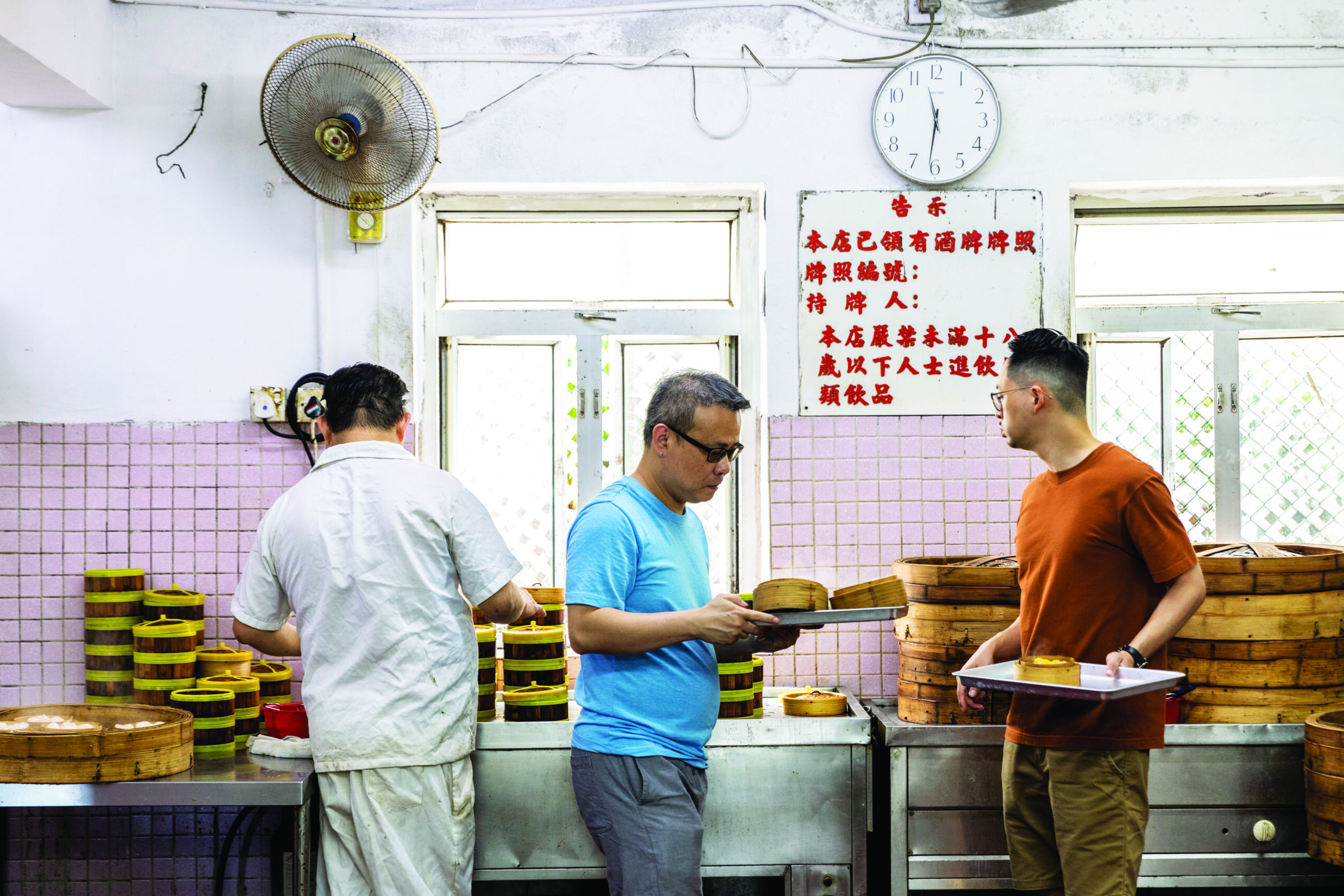
Regulars know the ways
Over the years, Duen Kee has attracted a loyal clientele who come to the restaurant regularly to enjoy tea. Numerous movies have also been filmed here — the most fondly-recalled of which is the classic Hong Kong 90s horror film The Untold Story. Many visitors to Duen Kee make a point of ordering the famous steamed barbecued pork bun featured in the film. Recently, renowned Korean chef Baek Jong-won visited Duen Kee to taste the most authentic Hong Kong dim sum, attracting a group of Korean tourists who were eager to sample the renowned restaurant for themselves.
Fai says sustaining the business is no easy feat. In recent years, hiking has become very popular in Hong Kong, bringing new groups of hikers to Duen Kee. But, at the same time, the restaurant is still recovering from the setback of COVID’s social distancing measures. As for the future of Duen Kee, Fai does not expect his children to take over the business, and prefers to handle the day-to-day affairs of the restaurant himself, even fixing the air conditioning and repairing the roof.
“In this industry, you really need to get your hands dirty to make money. Even if the money is right there on the ground, you still have to bend down and pick it up, don’t you agree? Running a restaurant is not as simple as it may seem; it involves a lot of physical labour.” He adds with a resigned air: “If there comes a day when I can no longer carry on, then so be it. I won’t force myself to continue.”
Fai takes a laid-back approach to the ups and downs of his business. He also observes customers coming and going. He recalls a group of retirees who used to come to Duen Kee every day after their morning exercise on the mountain. They would set a table for themselves, sit at the entrance, chat, and wait for him to wake up and start serving. “I often likened them to the ‘Fu, Lu, Shou’ (The Chinese gods of happiness, wealth, and longevity, who are often depicted as benevolent elderly figures) sitting at the entrance, enjoying their tea, chatting away; and, before they realised it, the day had passed. But they have now passed away one by one, and there is no one to be seen in the early mornings,” he reflects a little sadly.
The outdoor seating on the second floor of Duen Kee provides a picturesque vista of the lush mountains of Tai Mo Shan. Over the years, it has served as a gathering place for sparrow enthusiasts, who would hang their birdcages on the railing, or from the ceiling, and enjoy chats and tea with the melodic birdsong in the background. Although Fai’s father has now passed away, the few Hwamei birds left behind still chirp inside the restaurant, warmly welcoming customers who come from afar to savor a cup of refreshing tea and some exquisitely crafted dim sum.
In recent years, hiking has become very popular in Hong Kong, bringing new groups of hikers to Duen Kee. But, at the same time, the restaurant is still recovering from the setback of COVID’s social distancing measures.
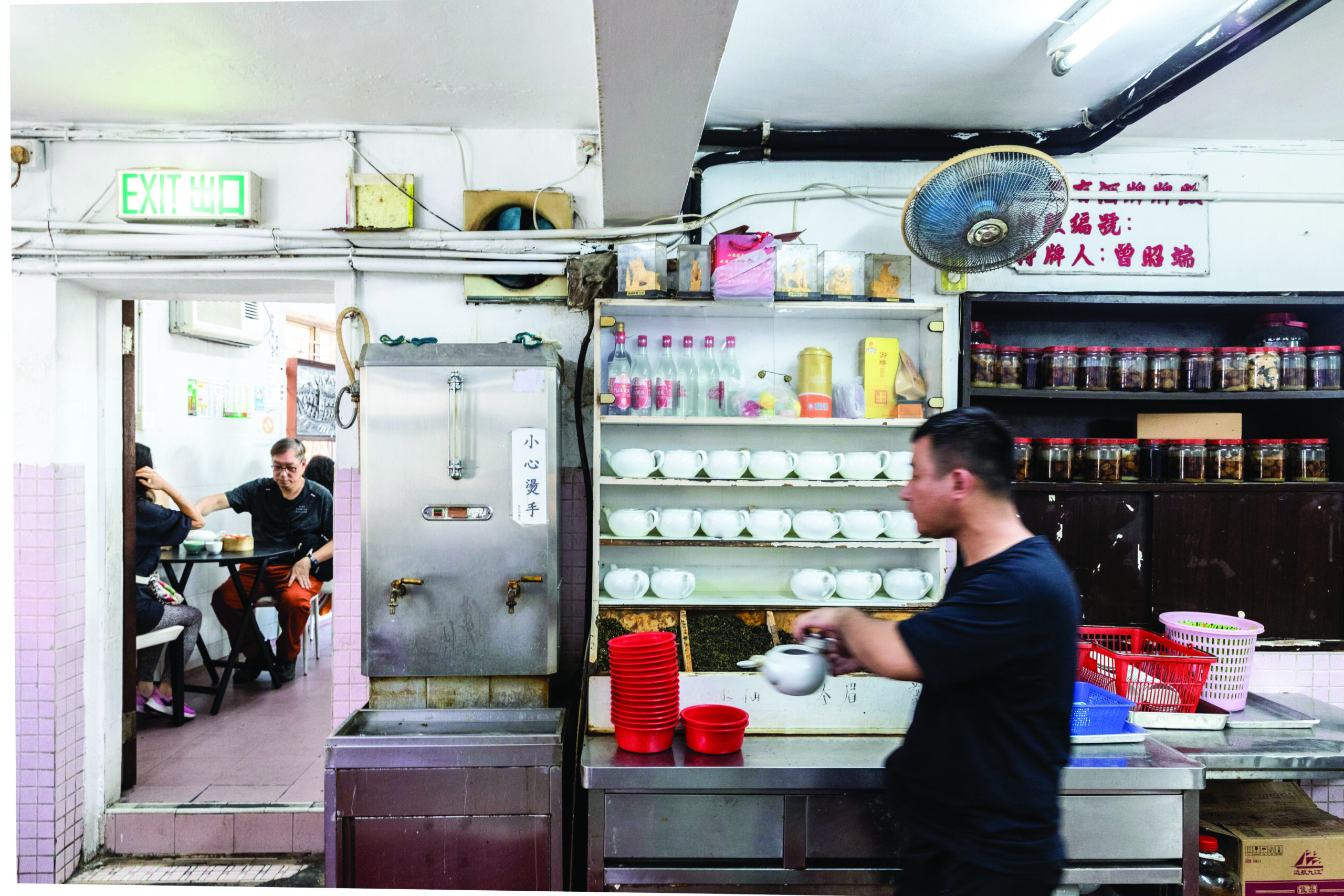
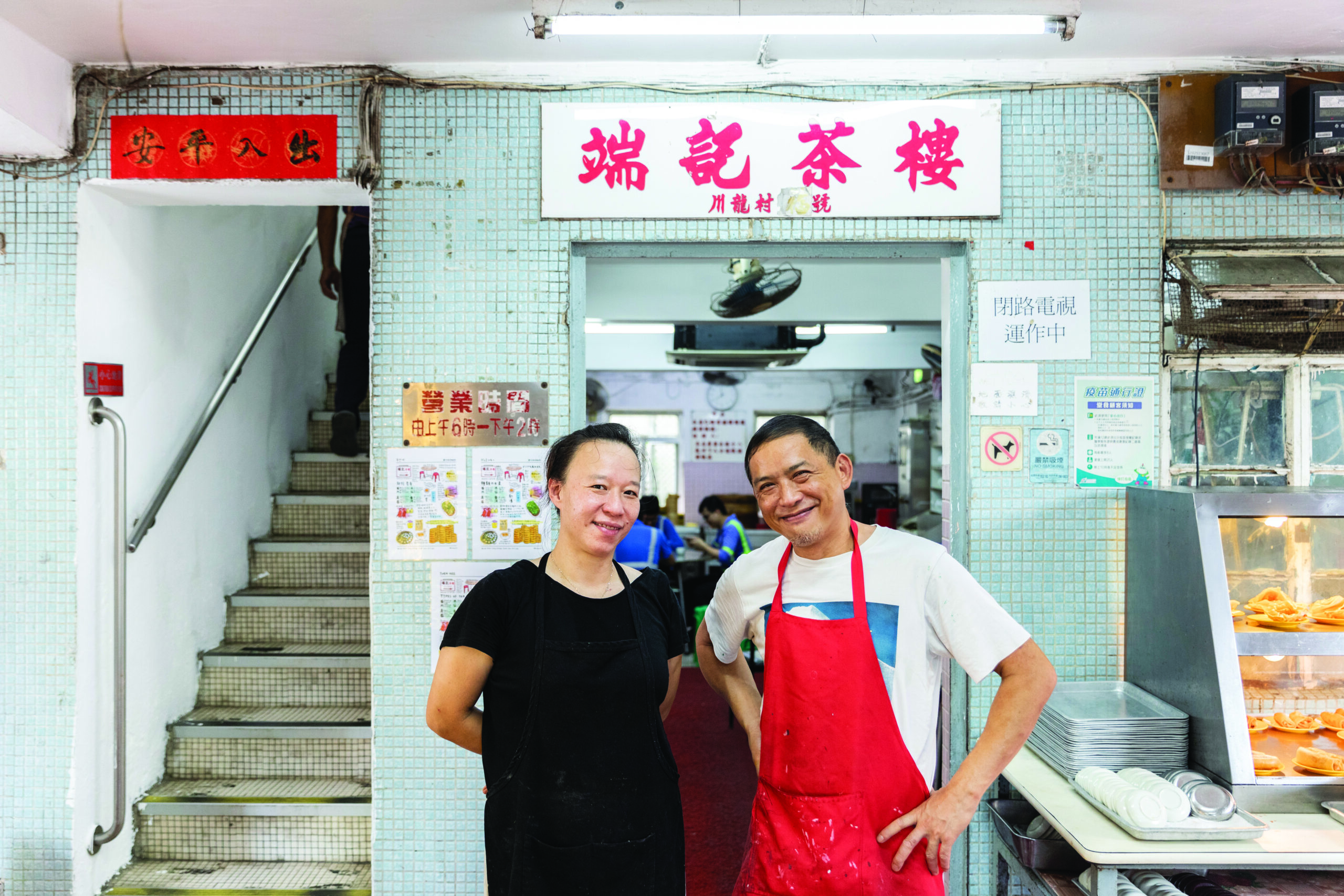
Tsang Kwan-fai, owner of Duen Kee Chinese Restaurant (right)

